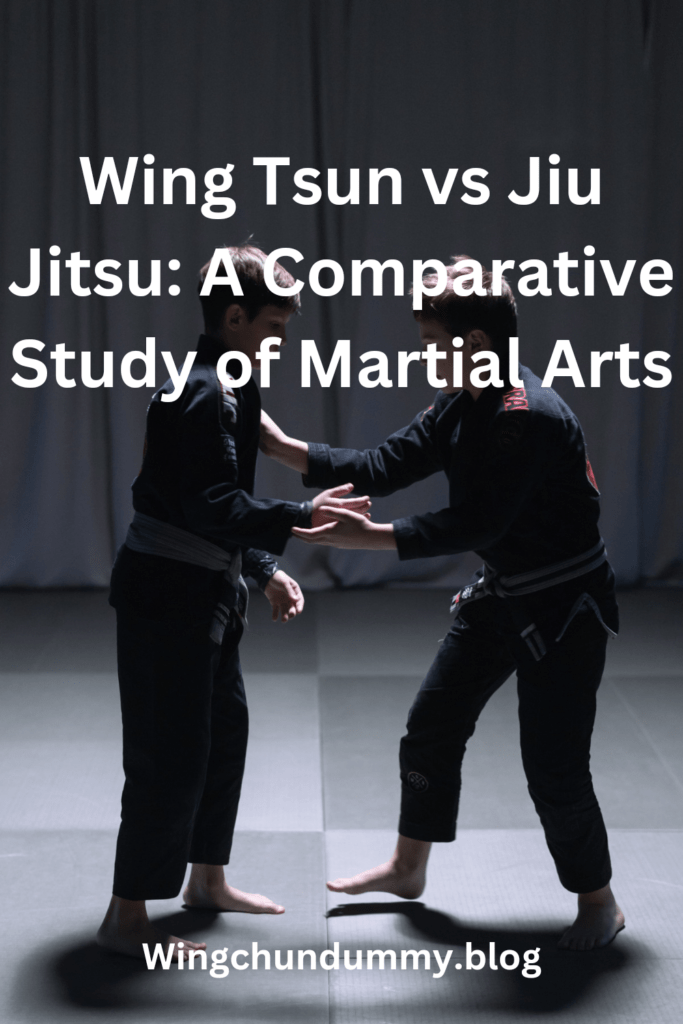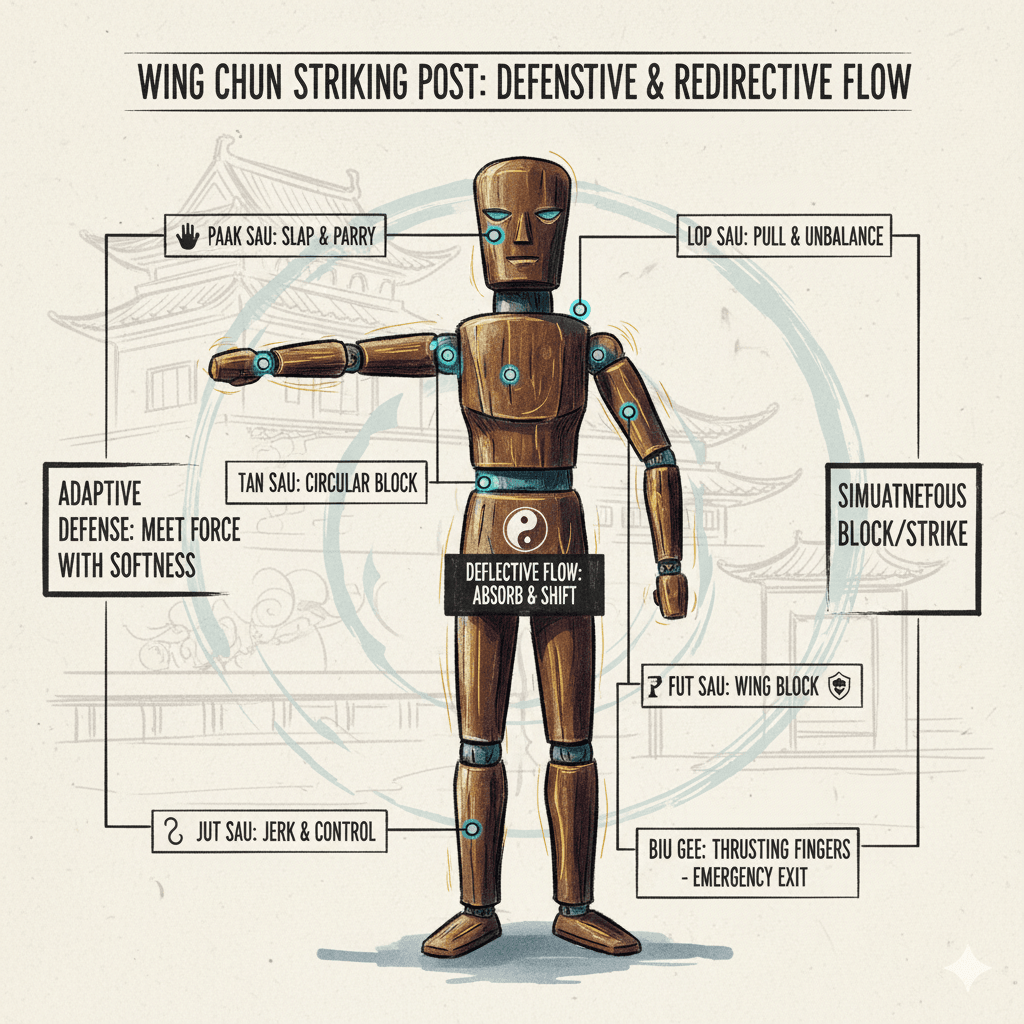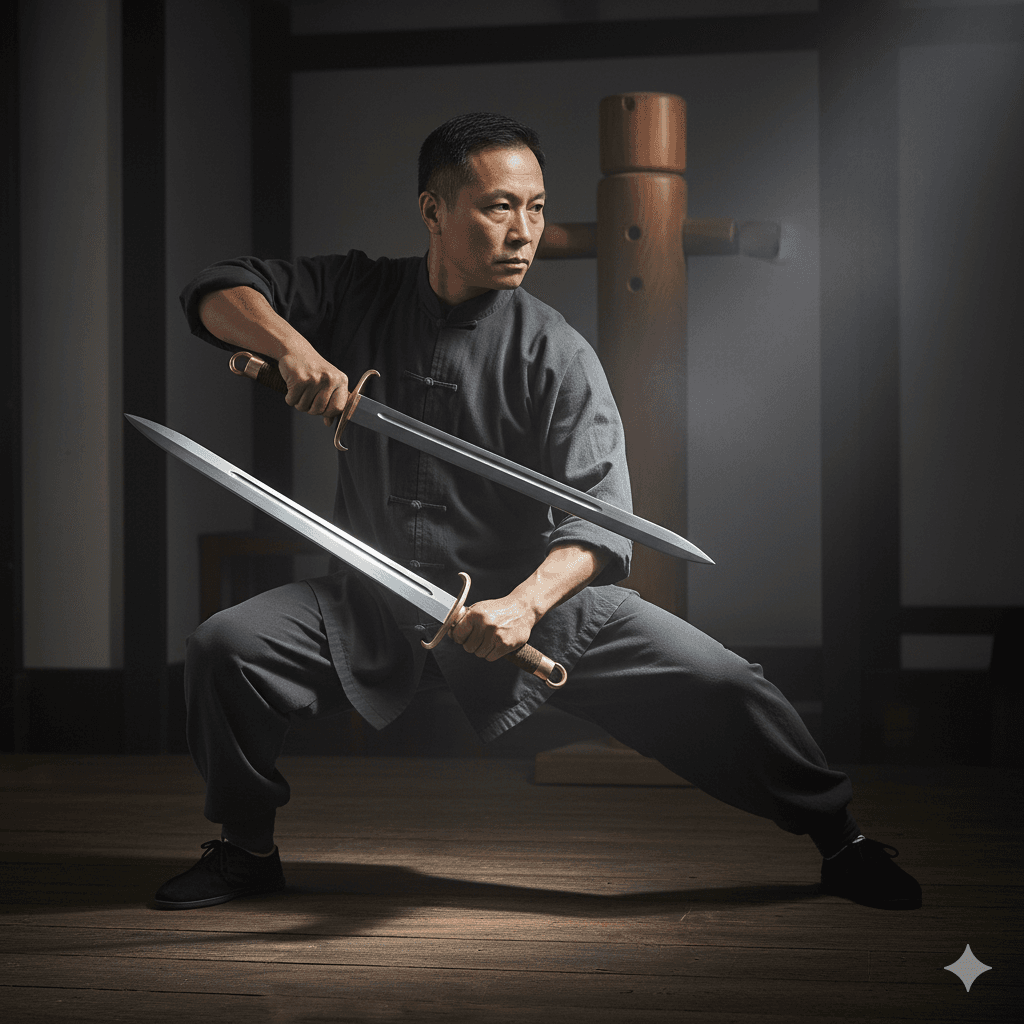Wing Tsun and Jiu Jitsu are two distinct martial arts that have garnered significant global recognition.
Each boasts a rich history and unique set of principles that define their practice and application.
Understanding these two martial arts requires delving into their origins and the philosophies that underpin them.
Wing Tsun, also known as Wing Chun, originated in southern China during the Qing Dynasty.
It is widely attributed to the legendary figures Ng Mui, a Shaolin nun, and her student Yim Wing Chun, after whom the art is named.
Wing Tsun focuses on close-range combat, emphasizing efficiency, directness, and economy of movement.
The core principles include centerline theory,
simultaneous defense
and attack,
and the use of an opponent’s force against them.
The martial art aims to neutralize threats quickly with minimal effort, positioning it as both an effective self-defense system and a practical combat style.
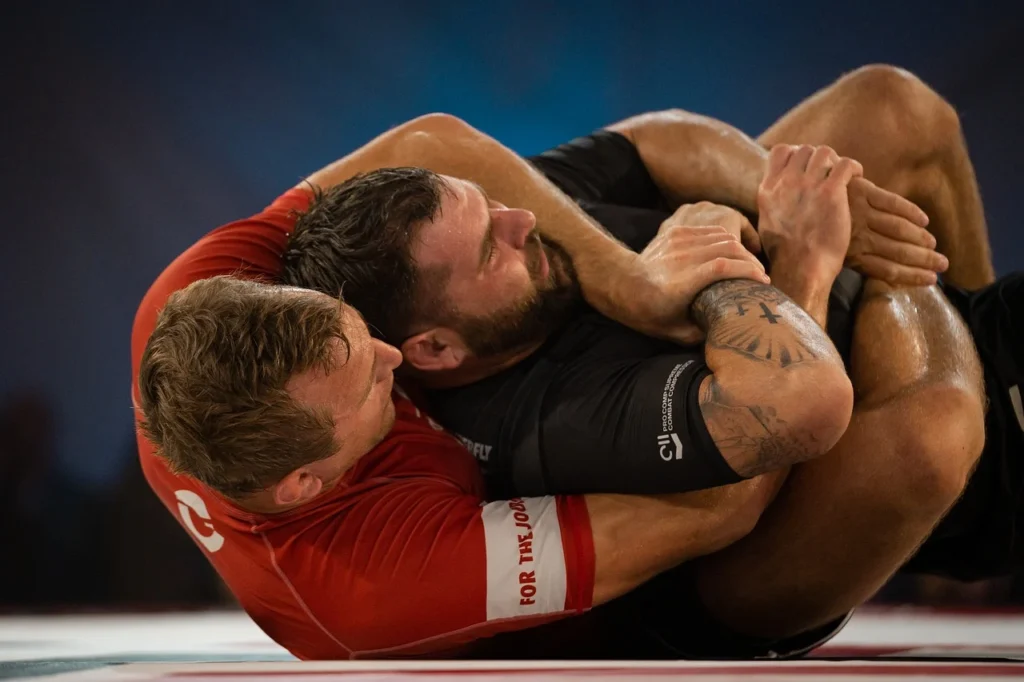
Jiu Jitsu, or Brazilian Jiu Jitsu (BJJ) in its modern form, has its roots in traditional Japanese Jujutsu.
It evolved through the influences of Mitsuyo Maeda, a Japanese judoka and Jujutsu practitioner.
Who brought the art to Brazil in the early 20th century.
There, he taught the Gracie family, who further developed and popularized Brazilian Jiu Jitsu.
BJJ places a strong emphasis on ground fighting, grappling, and submission holds.
Its key principles involve leverage, technique, and positional control, allowing a practitioner to effectively subdue larger and stronger opponents.
The philosophy of Jiu Jitsu revolves around the concepts of adaptability and strategy.
Promoting the idea of overcoming adversity through skill and mental acuity.
The comparison between Wing Tsun and Jiu Jitsu often arises due to their contrasting approaches to combat and self-defense.
While Wing Tsun excels in close-quarter striking and rapid response.
Jiu Jitsu is renowned for its grappling and ground control techniques.
This comparative study aims to explore these differences and similarities.
Providing a comprehensive understanding of how each martial art operates within the broader context of self-defense and martial practice.
Fundamental Techniques and Strategies
Wing Tsun and Jiu Jitsu, though both martial arts, diverge significantly in their fundamental techniques and strategies.
Wing Tsun, a Chinese martial art, emphasizes direct and efficient movements aimed at neutralizing an opponent quickly.
One of its hallmark techniques is chain punching.
Where rapid, successive punches are delivered along the opponent’s centerline, creating overwhelming pressure.

Additionally, Wing Tsun practitioners use trapping to control an opponent’s limbs, thereby nullifying their ability to attack or defend effectively.
The centerline theory, which dictates that attacks and defenses should focus on the body’s central axis, is a core strategic principle in Wing Tsun.
This theory ensures that movements are economical and aimed at the most vulnerable points of an opponent.
Conversely, Jiu Jitsu, particularly Brazilian Jiu Jitsu (BJJ), is a grappling-centric martial art.
It focuses on techniques that allow practitioners to control and submit their opponents, even if they are larger or stronger.
Grappling is the foundation of Jiu Jitsu, where practitioners use throws, takedowns, and positional control to bring the fight to the ground.
Once on the ground, submissions such as arm locks, chokes, and leg locks come into play, forcing the opponent to concede.
Positional control is vital in Jiu Jitsu; practitioners aim to dominate positions like the mount or back control.
Which provide advantageous leverage to apply submissions effectively.
The strategic differences between Wing Tsun and Jiu Jitsu are pronounced.
Wing Tsun prioritizes striking and rapid, decisive engagements to incapacitate an opponent swiftly.
In contrast, Jiu Jitsu adopts a methodical approach, emphasizing the importance of positioning and technique over brute force.
While Wing Tsun practitioners might rely on quick, successive strikes to overwhelm an opponent.
Jiu Jitsu practitioners focus on closing the distance, executing takedowns, and leveraging positional control to secure a submission.
These divergent approaches highlight the unique philosophies each martial art brings to combat situations.
Offering practitioners distinct pathways to achieving victory.
Training Methods and Practices
The training methods and practices of Wing Tsun and Jiu Jitsu exhibit distinct differences.
Reflecting their unique philosophies and approaches to martial arts.
Wing Tsun training typically emphasizes forms, drills, and sensitivity exercises.
Practitioners often begin with the Siu Nim Tao form, which focuses on developing fundamental hand techniques, stances, and body structure.
Chum Kiu and Biu Tze are advanced forms that build upon these basics, incorporating more complex movements and concepts.
In Wing Tsun, drills such as Chi Sau (sticky hands) play a crucial role in developing
sensitivity,
reflexes,
and the ability to respond to an opponent’s energy.
These exercises are practiced with a partner and aim to enhance close-range combat skills.
Sparring in Wing Tsun is generally less frequent and more controlled.
Focusing on specific techniques and scenarios rather than free-form fighting.
Conditioning exercises in Wing Tsun prioritize overall body strength, flexibility, and endurance.
Often incorporating traditional methods like stance training and wooden dummy drills.
On the other hand, Jiu Jitsu training is characterized by a heavy emphasis on live sparring and rolling.
Jiu Jitsu practitioners engage in regular sparring sessions.
Allowing you to apply techniques in realistic scenarios against resisting opponents.

This live practice is fundamental to the art, as it helps develop timing, control, and adaptability.
The training routines in Jiu Jitsu include a mix of technique drills,
Positional sparring, and full sparring rounds.
These drills focus on various aspects such as escapes, submissions, and positional control.
Conditioning in Jiu Jitsu often involves a combination of bodyweight exercises, functional strength training.
And specific drills designed to improve grip strength and cardiovascular endurance.
Unlike Wing Tsun, Jiu Jitsu does not incorporate traditional forms or kata.
Instead, it relies on repetitive practice of techniques and constant adaptation through live training to build proficiency.
Overall, Wing Tsun and Jiu Jitsu offer contrasting training experiences.
With Wing Tsun focusing on structured forms and sensitivity drills, while Jiu Jitsu emphasizes live sparring and adaptability.
Both martial arts provide valuable physical and mental training.
Catering to different aspects of self-defense and personal development.
Self-Defense Applications
When considering the practical application of martial arts for self-defense.
Both Wing Tsun vs Jiu Jitsu offer distinct yet effective approaches.
Each martial art has developed unique techniques tailored to handle a variety of real-world scenarios.
Understanding how practitioners of these disciplines respond to common self-defense situations can provide valuable insights into their effectiveness.
Wing Tsun, a martial art known for its efficiency in close-range combat, emphasizes quick, direct strikes to neutralize threats swiftly.
Practitioners train to react instinctively, using simultaneous defense and attack to overwhelm opponents.
For example, in a situation where an assailant attempts a frontal assault.
A Wing Tsun practitioner would likely employ chain punches aimed at vulnerable points such as the eyes, throat, or solar plexus.
The goal is to incapacitate the attacker quickly, leveraging the principle of economy of movement to conserve energy while maximizing impact.
In contrast, Jiu Jitsu, with its focus on grappling and ground-fighting, offers a different set of tools for self-defense.
When faced with an aggressor, a Jiu Jitsu practitioner might seek to close the distance and execute a takedown, bringing the fight to the ground where their skills are most effective.
Techniques such as joint locks and chokeholds are employed to subdue the attacker without causing permanent harm.
For instance, if grabbed from behind, a Jiu Jitsu expert might use a hip throw to bring the assailant to the ground and then apply an armbar or rear-naked choke to control the situation.
Wing Tsun vs Jiu Jitsu
The effectiveness of Wing Tsun’s close-range combat techniques and Jiu Jitsu’s ground-fighting capabilities can be context-dependent.
In confined spaces or against multiple attackers, the rapid strikes and defensive maneuvers of Wing Tsun may provide an advantage.
Conversely, Jiu Jitsu’s proficiency in controlling and neutralizing threats on the ground can be particularly beneficial in one-on-one encounters where the practitioner can leverage their grappling skills to dominate the opponent.

Ultimately, both Wing Tsun and Jiu Jitsu offer robust strategies for self-defense.
The choice between them may come down to individual preference, situational considerations, and the specific threats one expects to encounter.
Sport vs. Traditional Practice
When examining the distinctions between sport-oriented and traditional practices in martial arts, Wing Tsun and Jiu Jitsu present a fascinating contrast.
Jiu Jitsu, particularly Brazilian Jiu Jitsu (BJJ), integrates a strong competitive element.
BJJ tournaments are a significant aspect of the martial art, providing practitioners with opportunities to test their skills in a controlled, competitive environment.
These competitions emphasize technique, strategy, and physical conditioning, pushing practitioners to refine their abilities continually.
The presence of these tournaments influences the training methodologies within BJJ.
Often focusing on techniques and strategies that will be advantageous in a competitive setting.
On the other hand, Wing Tsun adheres closely to its traditional roots, focusing primarily on self-defense.
The training in Wing Tsun is designed to prepare practitioners for real-life confrontations, emphasizing practical and efficient techniques to neutralize threats quickly.
This traditional approach is less concerned with competition and more with the application of martial art principles in everyday scenarios.
The absence of a strong competitive element means that Wing Tsun training does not place as much emphasis on the physical conditioning required for sports competitions, focusing instead on the development of reflexes, balance, and precision.
While Wing Tsun does have some forms of competition, they are not as prevalent or emphasized as in BJJ.
These competitions are often more about demonstrating skill and technique rather than engaging in direct combat.
This reinforces the traditional philosophy of Wing Tsun, where the art is viewed as a means of personal development and self-protection rather than a sport.
The dichotomy between the sport-oriented practice of Jiu Jitsu and the traditional practice of Wing Tsun highlights the diverse approaches within martial arts.
Each style offers unique benefits, catering to different goals and preferences among practitioners.
Whether one seeks the thrill of competition in Jiu Jitsu or the practical self-defense skills of Wing Tsun, both martial arts provide valuable paths to personal growth and mastery.
Cultural and Philosophical Aspects
Wing Tsun and Jiu Jitsu, while both martial arts, are deeply rooted in distinct cultural and philosophical traditions that shape their practice and values.
Originating from China, Wing Tsun is steeped in the rich heritage of Chinese martial arts, which emphasizes the principles of balance, flow, and efficiency.
Practitioners of Wing Tsun are taught to embody the philosophy of using an opponent’s force against them, a concept that extends beyond physical combat to everyday life.
This approach fosters a mindset of adaptability and resilience, encouraging respect for one’s own abilities and those of others.
Respect and discipline are central tenets in Wing Tsun.
The hierarchical structure within the training environment ensures that students show reverence to their instructors and peers, promoting a culture of humility and continuous learning.
The philosophical underpinnings of Wing Tsun also stress the importance of inner peace and self-control, aiming to harmonize the practitioner’s mind and body.
In contrast, Jiu Jitsu, with its origins in Japan, is influenced by the Bushido code, which emphasizes honor, discipline, and moral integrity.
The cultural heritage of Jiu Jitsu is intertwined with the samurai tradition, where the martial art was not merely a means of self-defense but a way of life.
This cultural background instills a profound sense of responsibility and ethical conduct in its practitioners.
Jiu Jitsu emphasizes the principle of leverage and technique over brute strength, encouraging practitioners to develop strategic thinking and problem-solving skills.
This philosophy translates into a mindset of perseverance and humility, as students constantly strive to refine their techniques and improve their understanding of the art.
The dojo environment fosters mutual respect and camaraderie, highlighting the importance of collective growth and support.
Both Wing Tsun vs Jiu Jitsu cultivate a holistic approach to martial arts, where the physical practice is deeply intertwined with mental and philosophical development.
Practitioners of both arts carry these values beyond the training hall, integrating respect, discipline, and humility into their daily lives, thereby enriching their personal and social interactions.
Pros and Cons of Each Martial Art
Wing Tsun vs Jiu Jitsu, two distinguished forms of martial arts, each offer unique advantages and disadvantages that cater to different types of individuals.
Understanding these pros and cons can help in determining which martial art aligns with one’s personal goals, whether for self-defense, fitness, or personal growth.
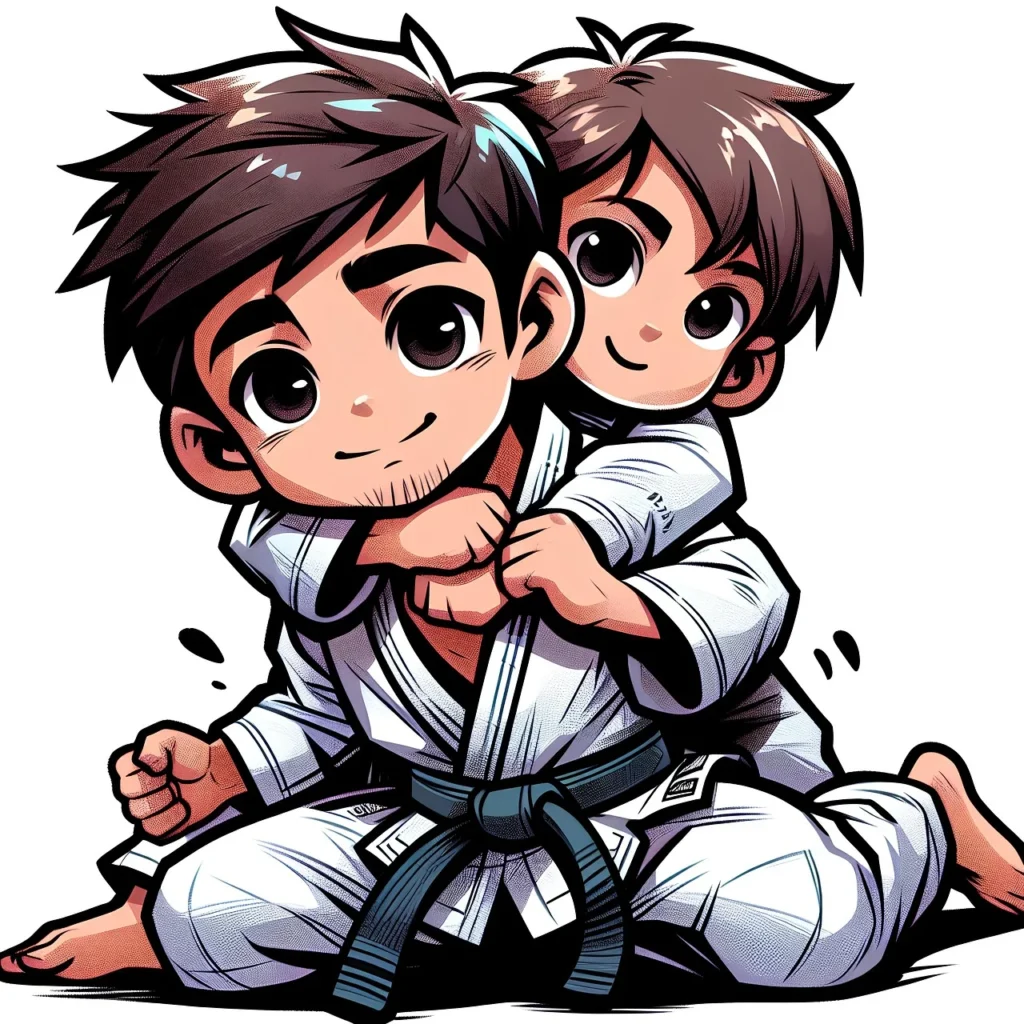
Wing Tsun, renowned for its focus on close-range combat and rapid strikes, is highly effective in self-defense scenarios.
Its techniques emphasize direct, linear movements aimed at neutralizing opponents quickly.
Making it suitable for real-world confrontations.
The martial art is also accessible to a wide range of practitioners, irrespective of their physical strength or size, due to its reliance on technique over brute force.
However, mastering Wing Tsun requires considerable dedication and time to perfect its complex forms and reflexive actions.
Which could be a deterrent for some individuals.
On the other hand, Jiu Jitsu, with its foundation in grappling and ground fighting.
Excels in situations where an encounter transitions to the ground.
This martial art is particularly advantageous for individuals seeking a comprehensive workout.
As it engages various muscle groups and enhances cardiovascular endurance.
Jiu Jitsu’s learning curve, though steep, offers continuous opportunities for improvement and personal growth, fostering resilience and discipline.
Nevertheless, the physical demands and potential for injury in Jiu Jitsu can be challenging, especially for beginners or those with pre-existing conditions.
In terms of suitability, Wing Tsun may be more advantageous for individuals prioritizing quick.
Efficient self-defense techniques, especially in confined spaces.
Conversely, Jiu Jitsu is better suited for those interested in a full-body workout and the strategic aspects of combat that involve leverage and body mechanics.
Each martial art has its unique strengths and weaknesses, and the choice between Wing Tsun vs Jiu Jitsu.
Ultimately depends on individual preferences, objectives, and physical capabilities.
Conclusion: Choosing the Right Martial Art for You
In our comparative study of Wing Tsun and Jiu Jitsu, we have explored the unique attributes, techniques.
and philosophies that define each martial art.
Wing Tsun, with its emphasis on close-range combat, fluid movements, and the principle of using an opponent’s force against them.
Offers a practical approach to self-defense.
On the other hand, Jiu Jitsu focuses on grappling, ground fighting, and submission holds.
Making it a comprehensive system for controlling and neutralizing opponents.
When deciding between Wing Tsun vs Jiu Jitsu, it is crucial to consider your personal goals, preferences, and circumstances.
If you are seeking a martial art that prioritizes quick reflexes and efficient use of energy, Wing Tsun might be more suitable.
Conversely, if you are interested in a discipline that emphasizes leverage,
Technique, and ground control, Jiu Jitsu could be a better fit.
Another important factor is the type of training environment you prefer.
Wing Tsun classes often focus on partner drills and real-world applications.

Whereas Jiu Jitsu training typically involves sparring and rolling sessions that simulate live combat scenarios.
Your comfort level with these training methods can significantly influence your enjoyment and progress in either martial art.
We encourage readers to try both Wing Tsun vs Jiu Jitsu, if possible, to gain firsthand experience and determine which martial art resonates most with them.
Visiting local schools, attending introductory classes.
And consulting with instructors can provide valuable insights into the training styles and community culture of each discipline. community culture of each discipline.
This hands-on approach will help you make an informed decision aligned with your personal aspirations.
Ultimately, the right martial art for you is one that aligns with your goals, fits your lifestyle.
And keeps you motivated to train consistently.
Whether you choose the striking techniques of Wing Tsun or the grappling expertise of Jiu Jitsu.
Both martial arts offer rich traditions and effective self-defense skills that can enhance your physical and mental well-being.
Let’s us know about your thoughts on Wing Tsun vs Jiu Jitsu.
Thanks

